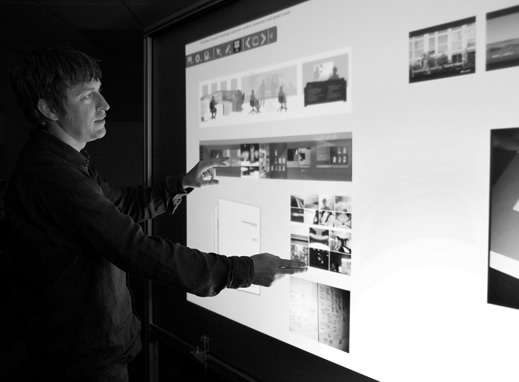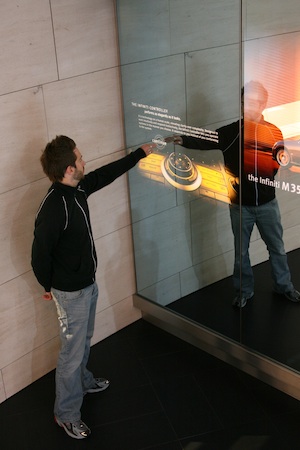
Photo by Alan Kupchick
Art Center faculty members Brian Boyl and Krystina Castella have both taken somewhat non-traditional routes in their careers. Boyl, director of interactive design in the Graphic Design Department, has a degree in physics, studied film and animation, has created computer software and produced video games. Castella created her own product development, manufacturing and licensing company; helps people start businesses and license products; and has written five popular cookbooks; the most recent, A World of Cake, named by Publisher’s Weekly as one of the best cookbooks of 2010. And this are just a few of the many noteworthy things these two have accomplished.
Also interesting—Boyl and Castella are spouses, meeting 20 years ago this month. Intrigued and curious about what motivates them to teach, how students have changed over the past two decades, and what it’s like to work with one’s significant other, we sat down with the couple for a chat.
Dotted Line: How did you two meet?
Brian Boyl: We met in 1991 at a Valentine’s Day party that a mutual friend of ours held for people who didn’t have dates. I was in film school then…
Krystina Castella: …and I was working a corporate job at Disney. We met at the party and got along really well. He called me the next day to ask me out, and I was eating a popsicle while we talked. I wrote about this in the introduction to my popsicle book, because I actually ended up saving the popsicle and freezing it.
Boyl: Yes, that popsicle went with us, every time we moved. It lasted for years. But sadly, it didn’t survive our last move.

Watch video
Dotted Line: Does it take a while for students to realize you’re married?
Castella: Yes, it’s funny—it’s the same thing every term. Many people at Art Center don’t realize we’re married. People that we’ve known for a long time do, but students are always new and don’t know at first; it’s always a shock. They seem to figure it out around Weeks 5 and 6. A student will come in and say to me, “I saw you with my other teacher,” or, “You were in the parking lot with Brian…”
Boyl: Or, “How do you know each other?” and, “I saw you two leaving campus in the same car….”
Castella: We teach in different departments, but we do have students that cross over. It’s great, we really get to know the student when that happens. We ask each other, “So how are they doing in your class?”
Dotted Line: Why do you teach?
Boyl: I love giving back to the younger generation. I also find teaching personally inspiring, because it’s always about the next thing. It’s always different, and always new—especially in the area where I teach, which is on the cutting edge of everything. And I find students tend to push me in my own creativity. And, you’re dealing with people, so it’s a lot of fun. I think I have the best job in the world.
Continue reading →









 Today marks 100 years since the founding of the
Today marks 100 years since the founding of the